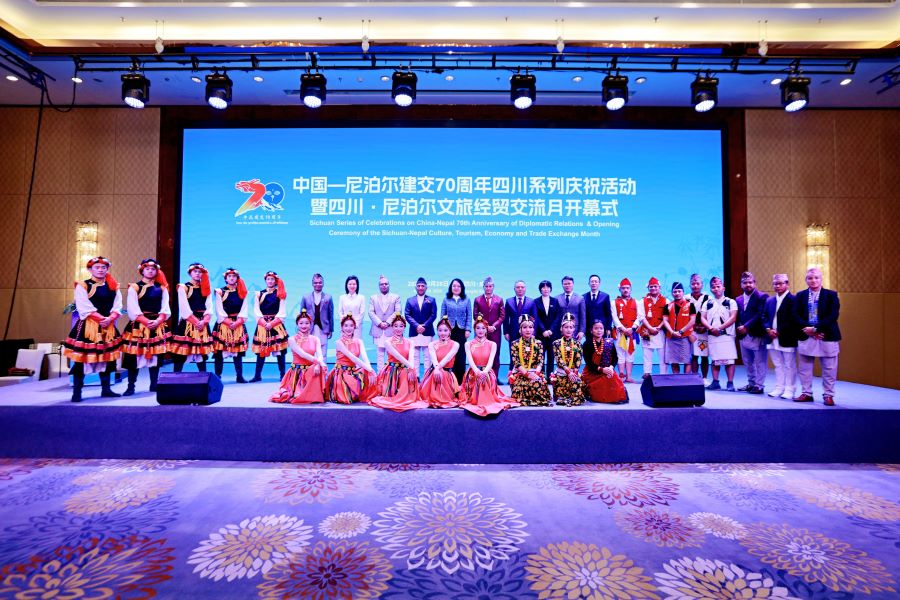Fast Fashion is destroying the World

Kathmandu. Looking at the current situation of Nepali fashion market, new fashion trends are coming almost daily. The number of followers is the same. In the name of following the fashion trends, we do not wear the clothes we bought more than once or twice.
The more we fill our wardrobe with clothes, more the earth will be worth it. This trend is worldwide. Aha! For a while but in the future, we are sure to pay a heavy price.
The more we use clothes, the more we buy and store unnecessary ones. While following the fashion trends of the market, we are also exploiting the labor of a working class community at the same time. We control their human rights, even the minimum rights.
Clothes worn by artists and social media influencers come into vogue immediately. Due to globalization, fashion style is spreading expeditiously all over the world. Today’s tomorrow will reach from one place to another. Fashion designers and manufacturers are launching new styles and consumers are starting to buy again. It is time to redesign the fashion style that has been revolving around this for decades.
The style of fashion in the world has changed more than two decades ago. The new fashion style that has changed is fast fashion. To understand how fast fashion started, one can look at the fashion from 1800 onwards. At that time, clothes were made of wool and leather. Along with the Industrial Revolution, the invention of modern machinery such as sewing machines made it easier to make clothes. After this, textile manufacturing also reached the middle class. These garments started making clothes with the help of workers.
By the 1960’s, the new generation was creating new trends. Clothes had become an object of human personality and status. By the end of the 1990’s and 2000’s, low-cost fashion was at an all-time high. Companies like H&M, Zara and TopShop captured the fast fashion market. Since then, people around the world have been able to buy cheap clothes at affordable prices when in need.
The world’s industries now produce 80 billion garments a year. The fabrics produced are applied an average of 10 times and then discarded. Fabrics made using low quality, low cost, low quality raw material are made to be consumed by any class in the market.
Fast fashion clothes are neither reused nor donated. These clothes go to the landfill or are burned. Fast fashion has huge social and environmental costs from production to consumption. It takes at least 200 years for clothes to rot. Therefore, the textile industry and its market has become the second biggest cause of pollution on earth.
The world is now producing 400 percent more clothing than twenty years ago. After agriculture, the second reason for polluting water resources is the textile industry. Wastewater from the textile industry contains large amounts of lead, mercury, and arsenic, which directly harm humans and aquatic life.
This water is mixed directly into the water source. Bangladesh’s garment industry alone discharges 22,000 tons of wastewater directly into rivers and seas each year. On the other hand, one ton of cloth requires 200 tons of fresh water.
Fast fashion has also taken away the human rights of workers in the garment industry. Faster the fashion changes in the market, faster the manufacturers have to make clothes. This has a direct effect on the person working in the garment. Obligation to address market demand requires working long hours. Even the minimum standards of labor cannot be applied to it.
Only after the collapse of the Rana Plaza in 2013, a nine-storey building in the Bangladeshi industrial city of Savar, did the world focus on improving the rights and safety of garment workers. Hundreds of garment workers were killed when the industry collapsed.
In addition, producing, transporting, and distributing large quantities of clothing consume the same amount of energy. If textiles are made at the current rate, greenhouse gases will increase by 26 percent by 2050. On the other hand, fast fashion is harming the earth’s ecosystem.
When we wash clothes, microplastics come out of synthetic fabrics like polyester and nylon. Consumed by these aquatic organisms, which are eaten by fish and we also, such fashionable clothes are one of the sources of plastic in the food chain.
We are living in a time of extreme consumerism in the midst of climate change, which has been calling the worst crisis in the world. Fast fashion is anti-sustainability in itself. The European Union (EU) has recently warned consumers to stop using their clothes like throwaway items. It plans to prevent pollution in the global environment, which is generating by fast fashion. The EU’s move could be expected to curb fast fashion to some extent.
Seen in this way, there are more disadvantages than advantages of fast fashion. It may have short-term benefits, it may play a significant role in the global financial system, but its long-term impact and environmental degradation is incomparable. In addition, since there is extreme exploitation of human resources, there is no alternative to making fast fashion ‘slow’. Even now, the media has not given much space to the damage caused by fast fashion in the world.
The new clothes we wear everyday are eroding nature, and the crisis it will cause in the future is unpredictable. Are we ready for it?
Trending
Related News
Latest
-

Riddara RD6 EV Pick Up Launches Exchange Offer In Nepal
-

Shop More, Save More with Daraz Nepal’s 5.5 Best Price, Best Deals
-

Unveiling the Galaxy S25 Ultra 1TB: Samsung’s Tera-fic New Flagship Variant Kicks Off the New Year with Unprecedented Storage Power
-

UK announces £10 million for Myanmar quake relief
-

World Bank Approves financing package of 150 Million USD to Nepal














